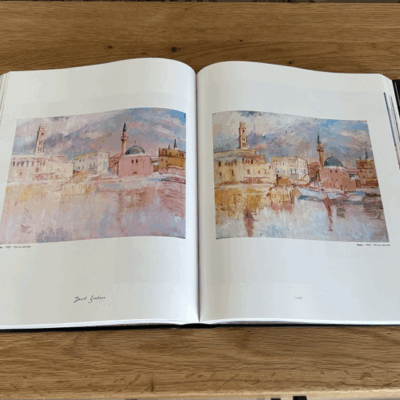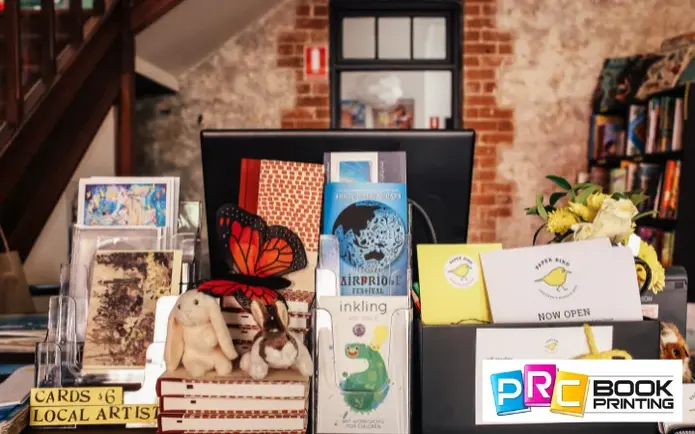The Artist’s Guide to Publishing a High-Quality art book
Discover the Essential Guide to Art Book Printing for Aspiring Artists and Publishers
As a hopeful musician or publisher, understanding the nuances of art book printing is essential to bringing your vision to life. What are the key elements you should concentrate on to create a sensational art book that absolutely represents your work?
Comprehending Various Kinds Of Art Books
When you plunge into the world of art books, you'll swiftly find that they can be found in various kinds, each customized to various imaginative expressions and audiences. Coffee table books frequently display sensational visuals, perfect for casual surfing, while monographs dive deep into a private musician's job, offering context and understandings. If you want specific art activities, exhibition brochures provide comprehensive paperwork of shows, featuring essays and critiques.
For educational functions, art manuals and method books lead you with various tools and styles, making them essential for striving artists. Each style serves its function, and knowing their differences can enhance your art book trip.
Picking the Right Paper and Materials
Choosing the ideal paper and products can considerably influence the overall high quality and feeling of your art book. For vibrant colors and detailed details, choose for a shiny coating or a heavyweight matte paper that improves aesthetic depth.
Think of the weight of the paper, also. Thicker options often offer an even more specialist appearance, while lighter papers can decrease printing expenses. Don't fail to remember concerning the binding products; a durable cover can safeguard your web pages and contribute to guide's visual.
Finally, think about sustainability. Green options are acquiring popularity and can reflect your values as a musician. By meticulously picking your paper and products, you'll ensure that your art book not only looks fantastic but also really feels unique in the hands of your visitors.

Selecting the Ideal Printing Methods
When it concerns publishing your art book, selecting between countered and digital printing can significantly affect your end product. You'll likewise intend to consider how paper quality influences the overall appearance and feeling of your artwork. Allow's explore these vital printing methods to locate the finest suitable for your project.
Countered vs. Digital Printing
While both balanced out and electronic printing have their advantages, selecting the right method for your art book can greatly affect the last product. Countered printing offers high-grade images and lively colors, making it optimal for bigger print runs. If you're wanting to generate hundreds or thousands of copies, counter will provide you regular outcomes and lower per-unit expenses. On the various other hand, electronic printing excels for smaller quantities and quicker turnaround times. It permits very easy customization, enabling you to print special duplicates without extra setup expenses. Consider your spending plan, timeline, and the quantity of your task. Ultimately, your option must straighten with your imaginative vision and distribution technique, making sure that your art book mirrors the top quality you desire.
Paper Top Quality Factors To Consider
Selecting the right paper top quality can considerably enhance the aesthetic appeal and responsive experience of your art book. For prints, a glossy finish can make pictures pop, while a matte finish gives a softer, a lot more subtle appearance.
Next, consider the sustainability of your choice. Eco-friendly alternatives are ending up being increasingly prominent and can appeal to environmentally-conscious viewers. Lastly, request examples to see how various papers collaborate with your artwork, making sure the final item reflects your vision flawlessly.
Ensuring Color Accuracy in Your Prints
To attain sensational prints, you require to concentrate on shade accuracy from the beginning. You'll wish to utilize shade calibration methods to confirm your screen and printer remain in sync. Additionally, proofing your work prior to the last print run can help catch any kind of discrepancies, ensuring your art looks simply as you envisioned.
Color Calibration Methods
Assuring shade accuracy in your prints starts with efficient shade calibration strategies that help maintain consistency between your electronic photos and last published products. First, calibrate your screen utilizing equipment calibration devices to attain the best color representation. This verifies that what you see on-screen matches what gets printed. Next, select a shade account fit for your printing procedure, like CMYK for print products. Frequently inspect your printer's settings and preserve it to prevent color shifts. It's likewise essential to use premium paper that matches your inks, as different surfaces can considerably impact color output. By consistently applying these strategies, you'll boost the total high quality of your art prints and much better communicate your artistic vision.
Proofing for Precision
While you could believe your digital photos await print, proofing is important for achieving shade accuracy. Prior to dedicating to a full print run, constantly request an evidence from your printer. This enables you to see exactly how colors convert from screen to paper. Contrast the proof with your adjusted screen to spot any type of inconsistencies. Pay attention to saturation, illumination, and hue, as these variables can substantially affect your end product.
If adjustments are needed, connect clearly with your printer concerning your desired results. Don't think twice to demand multiple proofs if essential; it's worth the investment to get it. Inevitably, comprehensive proofing warranties that your art work is represented as you imagined it, keeping your artistic stability throughout the printing procedure.

Designing Layouts That Enhance Your Artwork
When you make formats for your art book, it's vital to contemplate exactly how each component interacts with your art work. Aim for an equilibrium between visuals and message, making sure neither overshadows the other. Use white space strategically; it gives your art work area to take a breath and attracts interest to its details.
Think about the flow of your book. Organize images in such a way that overviews the viewers's eye, developing a narrative or thematic progression. art book. Vary the dimensions and alignments of your art work to keep the design vibrant and intriguing
Select fonts that match your artwork without distracting from it. Maintain message succinct and pertinent, giving context or understanding that enhances the visitor's experience.
Lastly, test various formats. Publish samples to see just how the styles equate on paper, and adjust as required. By attentively creating your formats, you'll create an aesthetically engaging art book that resonates with your target market.
Binding Options for a Specialist Complete
Picking the right binding alternative can substantially affect the total presentation of your art book. You'll wish to take into consideration both aesthetics and toughness when making your site link option. Popular alternatives include excellent binding, which provides a smooth look and is excellent for thicker publications; saddle sewing, ideal for smaller sized pamphlets; and spiral binding, which permits web pages to lay flat for simple viewing.
If you're aiming for a premium feel, situation binding is an exceptional choice, giving a durable cover and an expert appearance (art book). Don't neglect concerning the cover material; alternatives like fabric, natural leather, or a shiny coating can elevate your book's appeal
Whatever choice you pick, ensure it enhances your art work and improves the visitor's experience. Take your time to consider the pros and disadvantages of each approach, so your end look these up product reflects the top quality of your creative vision.
Preparing Your Documents for Print Preparedness
To assure your art book is print-ready, you'll require to pay close interest to submit prep work. Beginning by setting your record size to match your wanted print measurements.
Take into consideration creating a proof to evaluate before the final print run. Adhering to these steps will certainly help you achieve a refined, expert art book.
Frequently Asked Inquiries
What Is the Average Price of Publishing an Art Book?
The average price of publishing an art book differs, yet you can expect to pay anywhere from $5 to $20 per duplicate, depending on aspects like size, paper high quality, and printing quantity.
Just How Can I Locate a Reliable Printing Firm?
To locate a reliable my company printing firm, begin by investigating on the internet reviews and asking other artists for recommendations. Contrast quotes, inspect profiles, and interact your demands clearly to guarantee they comprehend your vision and quality assumptions.
What Is the Regular Turn-around Time for Printing?
The regular turn-around time for printing differs but generally ranges from one to 4 weeks. Elements like task complexity and quantity can impact this. Constantly validate with your selected printer for particular timelines and assumptions.
Can I Print My Art Book in Limited Quantities?
Yes, you can definitely publish your art book in minimal quantities. Lots of printing companies use short-run alternatives, allowing you to create just the number you need, making it less complicated to manage expenses and supply.
What Lawful Considerations Should I Know for My Art Book?
You ought to take into consideration copyright, licensing arrangements, and design launches when creating your art book. Make sure you have the right to make use of all images and message, securing yourself from potential legal problems in the future.